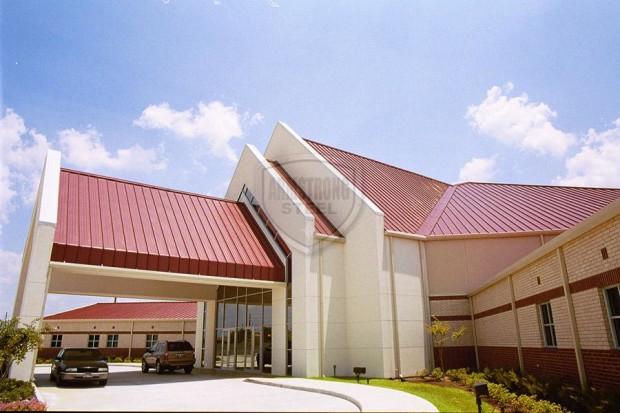Building Your Church without Breaking the Bank

 From the story of Noah to modern times, one huge question faced by every leader of the faithful has been, “How much space am I going to need?” While early church builders erected mammoth structures that took years and tremendous budgets to complete, you will find that building a new space for your congregation can be remarkably quick and you won’t need to pray for a miracle to pay for it.
From the story of Noah to modern times, one huge question faced by every leader of the faithful has been, “How much space am I going to need?” While early church builders erected mammoth structures that took years and tremendous budgets to complete, you will find that building a new space for your congregation can be remarkably quick and you won’t need to pray for a miracle to pay for it.
For many of you, the term ‘pre-engineered’ creates images of boxy steel warehouses or flimsy, shed-like structures. Nothing could be further from the truth. Many congregations have found that going with pre-fabricated structures is not only affordable but allows your congregation the opportunity to connect to their house of worship in a way that traditional construction may not.
 One of the first questions you should consider is how much space you will need. I generally recommend you figure about 15 square feet per person for the sanctuary. If your congregation is 100 people, you should plan on a 1500 square foot worship area. Unlike the mason crafted churches of old, the distinct advantage of choosing a pre-engineered structure is the ease in which your building can grow with your congregation.
One of the first questions you should consider is how much space you will need. I generally recommend you figure about 15 square feet per person for the sanctuary. If your congregation is 100 people, you should plan on a 1500 square foot worship area. Unlike the mason crafted churches of old, the distinct advantage of choosing a pre-engineered structure is the ease in which your building can grow with your congregation.
I also recommend beginning with a long, narrow, but tall structure. This keeps the cost of the building low but allows you to easily add a second level mezzanine without knocking out walls. A second level can hold an additional 50 people; a choir; or serve as a place where mothers with babies, who are less than pleased to be in attendance, can go without disrupting the service.
Another big question you should consider is how to raise the funds for the construction. This is perhaps the stage at which your congregation can feel the most connected. Those of your flock with limited financial means but an assortment of specialized skills might be able to contribute to the actual erection of the building and interior design; wielding a hammer and simple power tools, instead of a checkbook. With good leadership and the talent of a committed congregation, the primary structure can be erected in a short amount of time. That’s right, it’s what I call the ‘blessing’ of pre-engineering.
 Some congregations have created an exterior wall where folks are encouraged to bring a single river rock to the service each week, affixing their stone to the side wall, creating one-of-a kind stone facades; piece by piece, member by member. Rather than pay for elaborate stained-glass windows, simple clear windows can be dramatically enhanced with scissors, translucent colored plastic, some tape and the limitless imagination of children.
Some congregations have created an exterior wall where folks are encouraged to bring a single river rock to the service each week, affixing their stone to the side wall, creating one-of-a kind stone facades; piece by piece, member by member. Rather than pay for elaborate stained-glass windows, simple clear windows can be dramatically enhanced with scissors, translucent colored plastic, some tape and the limitless imagination of children.
The exterior of your church might be finished in any number of ways to drastically and distinctly change the appearance of a pre-engineered building. Some churches attach plywood and mesh to the exterior for a spray-on stucco look. Some apply simple wood plank siding or fake brick panels to give the appearance of a traditional building exterior. Whatever you decide, the fact remains that a pre-engineered building offers affordable and nearly limitless options for finishing.
The Bible teaches that it took seven days to create the world. While this may be humanly impossible to duplicate, when you choose pre-engineering, you can at least create a community, in just a few days.
« Hiring the Right Employee – Why You Should Get Emotional About It
Architects – When to Draw the Line on Drawing the Lines »
Popular Posts

Armstrong Steel is adding a new feature to the First Time Builders Blog, called Tools of the Trade. Each month, we’ll highlight a hand tool, power tool or anything specifically used in the erection of an Armstrong Steel Building system. We’ll talk about what these tools are used for, and how they are used on… …

So often throughout the Armstrong Steel Network, my colleagues and I will offer advice about buying and erecting your steel workshop. Because steel buildings are so simple to erect, many people like to take their own time and do it themselves. If that’s the case with you, then you’ll likely need some kind of forklift… …

